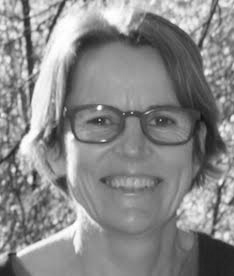Ending the climate crisis in one generation
By Jena Griffiths | November 8, 2021
Highly recommended reading! Paul Hawken’s book Regeneration, Ending the climate crisis in one generation is an empowering, hopeful and beautiful book offering us sane advice in a world that’s seemingly spinning in the opposite direction.
 “It’s not game over. It’s game on,” says Paul
“It’s not game over. It’s game on,” says Paul
and his solution is simple:
“Stop. Turn around. Go the other way.”
The solutions are not technical. They are about relationship. We can choose practice the one superpower we can all evoke at will – to be humane.
“The root cause of global warming is the massive disconnetion between each other, between people and nature…regeneration is really about reconnecting those broken strands.”
“Vital connections have been severed between humans and nature…
and it is where we can discover solutions…
“Regeneration means putting life at the centre of every action and decision.
“The ultimate power to change the world does not reside in technologies. It relies on reverence, respect, and compassion – for ourselves, for all people and for all life. ” Paul Hawken
Where to start?
Paul offers 12 Guidelines, the yes or no questions listed below, that help us sharpen our focus to see the longer view.
We can apply these guidelines to every action or decision we take.
Does the action create more life or reduce it?
Does it heal the future or steal the future?
Does it enhance human well-being or diminish it?
Does it prevent disease or profit from it?
Does it create livelihoods or eliminate them?
Does it restore land or degrade it?
Does it increase global warming or decrease it?
Does it serve human needs or manufacture human wants?
Does it reduce poverty or expand it?
Does it promote fundamental human rights or deny them?
Does it provide workers with dignity or demean them?
In short, is the activity extractive or regenerative?
“There is no difference between a climate denier and someone who understands the problem but does nothing;,” says Paul. “No one is coming to help. Collectives begin with one person and then another, the invisible social space where commitment and action join and come together and become a movement.”
Are your moment to moment choices supporting life and regeneration or the opposite?
Action by action ask yourself:
What am I eating? What am I buying? What am I wearing? What am I making? ….
More about this, see Paul’s website: regeneration.org
Some recent interviews:
30 minutes
2 hrs with garrison institute
Drawdown solutions
Surprisingly reduced food waste is the 3rd biggest solution to reducing carbon in the atmosphere!
This is something we can all easily address. So too changing what we eat and what we buy or support.
Check out all the Nexus Challenges and solutions that address and prevent the climate crisis. Details of what needs to be done and how to do it on all levels of agency. Going live soon Agroecology, Heat Pumps, Marine Protected Areas, and Boreal Forests.. .get engaged wherever you feel inspired or called to.
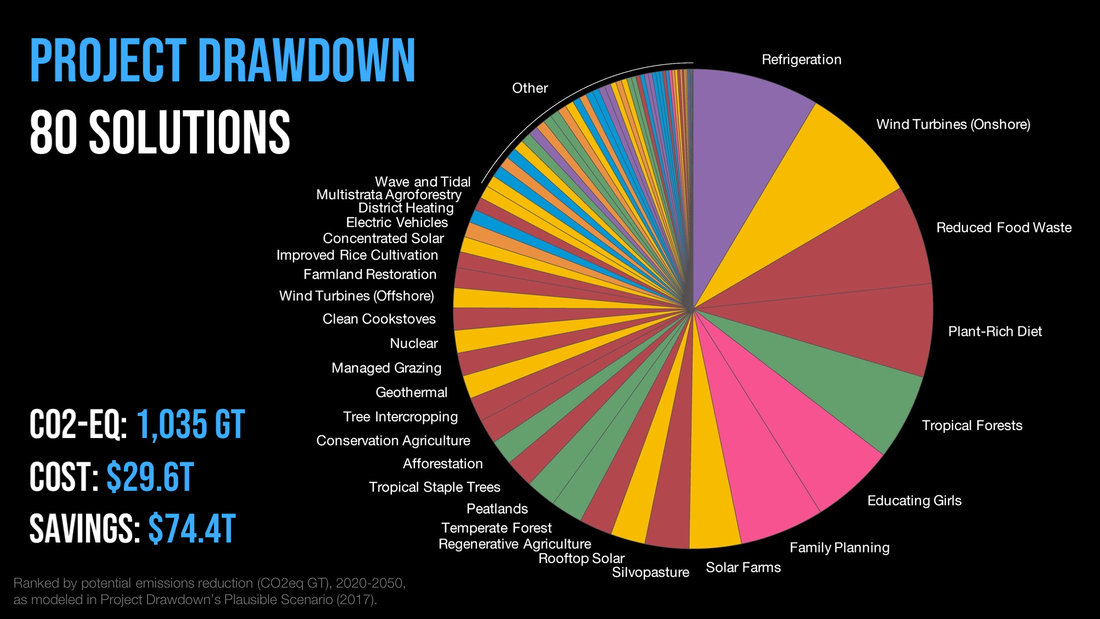
Topics: climate change, ecology and nature, Environment | No Comments »
Why we need to say no to ocean mining
By Jena Griffiths | March 14, 2021
I’m really concerned about the possibility and consequences of allowing deep sea mining of cobalt rich nodules on the ocean floor that are home to numerous species, many that we haven’t even discovered yet. Scroll down towards end of this interactive guide by the Guardian news. We don’t know enough about this sensitive habitat and the consequences of destroying it.
Better venture capitalists fund explorations into space to mine astroids for the minerals than sthan reek havoc with our fragile and little understood ecosystems on the ocean floor. Or better still, invest in the development of viable salt battery technology. Salt is plentiful, and sustainable, it doesn’t require the destruction of fragile ecosystems, unlike cobalt and lithium.
More on this topic by David Attenborough. More by Chris Packham on why the seabed should be off-limits to mining companies.
Get involved – take action here
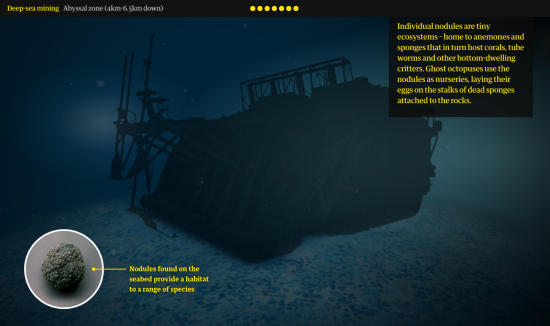
Go on a wonderful virtual tour of the ocean depths Visit this interactive guide to the depths thanks to the Guardian newspaper, to find out a bit of what is living in the oceans at various depths.
Topics: ecology and nature, Environment | 2 Comments »
What can we do to support life on our planet?
By Jena Griffiths | March 14, 2021
Recently I listened to this fascinating discussion between Dr Sylvia Earle of Mission Blue and the makers of the Octopus Teacher documentary, Craig Foster and Pippa Erlich, co-creators of Sea Change Project, mediated by Will Travis of the Elevation Barn
A Discussion with Dr. Sylvia Earle and Craig Foster from My Octopus Teacher
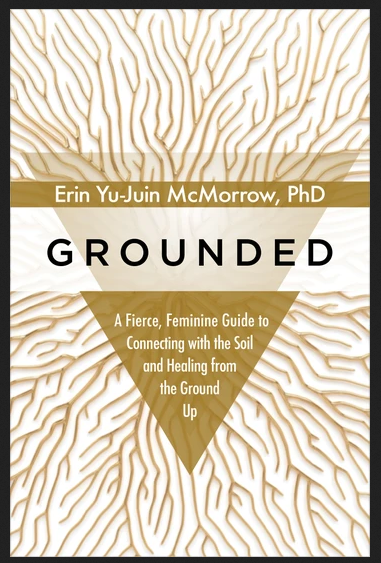
And now a new book to help us walk this talk
I loved this conversation between Sounds True’s Tami Simon and Dr. Erin Yu-Juin McMorrow about her new book: Grounded
listen to this conversation here
“Healing the Soil, Healing Ourselves”
In the conversation McMorrow mentions all the micro organisms and fungi in soil that play a vital role in keeping us and our planet healthy and how we can play our part..
More about the book Grounded: A Fierce, Feminine Guide to Connecting with the Soil and Healing from the Ground Up.
Also check out this important conversation about life as collaboration and community and the importance of biological diversity for personal, social, and ecological health. This conversation took place between Charles Eisenstein and Dr Zach Bush, and MD who focuses on the relationship between, brain/gut health, the microbiome and soil science. They discuss the inventive fecundity of life, the role of viruses in sharing genetic information, and more. Charles Eisenstein’s podcast or on soundcloud Transcript
How can cows be part of the solution?
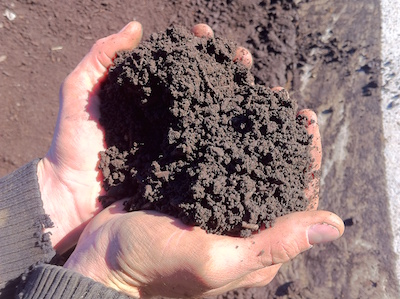
I really believe that cows and other animals can play an important role in removing carbon from the atmosphere. Here’s my Earth School interview with Thomas Rippel in 2015 on how cows can be part of the solution to climate change, to help store carbon in the soil rather than in the air, through bringing back ancient methods of composting, made possible through small scale animal husbandy to enrich and increase the microorganisms that make up a healthy soil.
More recently Kultureland eG an organization that people can donate land to, or fund, for land to be put in the hands of people focused on soil regeneration.
A great idea re collective buying power, where each human can buy the land needed to support one or more people (currently about 2000 square metres per person/ approx €6000 in Europe.) This organisation enables one to buy shares for collective purchase of the land so that the soil can be protected by people who put their hearts into this matter.
Other people doing excellent work in this regard are Rob Herring & Ryan Wirick, the makers of the film the Need to Grow regarding some brilliant ideas from Michael Smith to accelerate the regeneration of soil using Algae AquaCulture Technologies (AACT) and the development of the Green Power House (GPH)
More about what happened after events documented in the film. Updates on a rebuild in Norway.
How you can get involved by growing your own food while enriching the soil.
How algae can help reduce carbon in the atmosphere – Algae world news
High quality, low carbon protein from microalgae
Topics: climate change, ecology and nature, Environment | 1 Comment »
Helping through entanglement
By Jena Griffiths | November 2, 2020
 The other day someone shared a powerful exercise in our small sangha that is really so simple but a complete game changer. This is about feeling gratitude on behalf of someone else even if their good fortune doesn’t apply to you and your current circumstances.
The other day someone shared a powerful exercise in our small sangha that is really so simple but a complete game changer. This is about feeling gratitude on behalf of someone else even if their good fortune doesn’t apply to you and your current circumstances.
For example, they get to do a course you wanted to do. Instead of feeling sorry for yourself, feeling gratitude for them shifts you to another place. It is a recognition that at some level we are all entangled and there’s no separation. Whatever happens to one happens to us all on some unseen level. When they benefit so does some part of us that isn’t separate.
Today I came across an exercise from Pema Chödrön that addresses the same concept but from the perspective of you being the one better off. How to sit with others’ pain or fear or sorrow and by digesting these feelings and expanding your own spaciousness this is shared with another or all others.
Wonderful guidance for all of us for the coming days from Pema choldron –
Listen to Free Audio – “Making a Relationship to Pain and Joy”
(Tonglen instructions)
Topics: Being in transition, climate change, Current, Dealing with the inner critic, Depression Cures, ecology and nature, Environment, Health, rollercoaster life, spirit, suicide | No Comments »
How to presence and digest fear – two calls with Markus Hirzig
By Jena Griffiths | April 8, 2020

Markus Hirzig on digesting fear and stress during today’s times
Many of us don’t feel fear, instead we project it onto others as danger, or blame. Or we numb ourselves or dissociate in order to feel safe due to past experiences. The problem is, fear shuts our minds down so we can’t do anything new or think in new ways to bring more intelligence and innovation into our community or the world in general.
What can we do to become more conscious of what we are feeling, or not feeling, and how can we digest these un-integrated feelings so as not to project our past onto the future?
Markus is a senior mentor who has been helping people digest and integrate fear for many years.
Wednesday April 8 –
Here’s a 10 minute clip from the hour long call
Full replay is in Earthuni – log into the free member zone to
access call 1 & 2
CALL 2
Thursday April 16
Access in Earthuni open auditorium.
Topics: Coming Soon, Free Auditorium, Health, rollercoaster life, Showing Up | No Comments »
How to strengthen your immune system
By Jena Griffiths | March 27, 2020
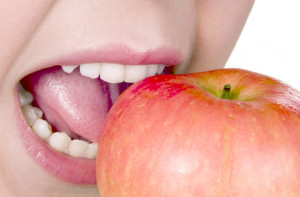 There are lots of ways we can boost our immune system and they all multiply each other.
There are lots of ways we can boost our immune system and they all multiply each other.
– get enough sleep (about 8 hours)
– practice gratitude
– exercise, at least 30 minutes per day or dance
– meditate
– do breath work (relax on the out breath and make it slightly longer than the in breath)
– sing, chant, play music that makes you feel happy
– get your family singing, chanting, dancing together
– just be fully present with others without saying much
– eat lots of fresh fruit and vegetables. Beetroot juice and other bright vegetables
– increase your zinc levels, vitamin C, and D (3)
– spend time outside, if possible in nature
– Listen to sounds of nature or singing bowls, gongs or tuning forks. Sound impacts nitric oxide in your body (see notes 5 below)
– don’t smoke
– avoid alcohol
– avoid eating or drinking cold things. Drink lots of hot or warm liquids. And stay stay hydrated by sipping warm water regularly. Warm drinks instead of cold are recommended to conserve your internal energy power house/core power or chi.
Here’s master qigong teacher Mantak Chia on why warm is better than cold in preserving your life force:
Other holistic suggestions from Dr Norm Shealy, a long standing medical practitioner from Missouri, USA.
Find a medical practitioner in advance who will be willing to give you high doses of vitamin C by IV drip should you become infected. This is particularly important if there are not enough respirators.
Here is an interview with Dr Norm Shealy who has decades of experience using this strategy on himself and others.
He mentioned Orac (oxygen radical absorbance capacity, meaning antioxidants, substances that can quench free radicals or unstable molecules that can cause cellular damage). Orac can be found naturally in most brightly colored (Green, orange, red) vegetables and cruciferous varieties (broccoli, Brussels sprouts, cabbage, cauliflower and turnips) more on Orac
More on high doses of vitamin C as a cure. (See note 3 below.)
How to self isolate in a home when one person has the virus and also when to send them to hospital
Excellent advice from South Africa, also regarding safe distances and how long the virus floats in the air before landing.
The case for masks – make your own masks to protect others in case you you have the virus, are infectious and don’t know.
Important update and facts about the virus from an Asst. Prof. in Infectious Diseases at Johns Hopkins University.
It is quite informative,
and is an excellent summary as to how to avoid the contagion, and it is very clear and easy to follow.
What to do about all the fear and panic?
Right now we are being shaken thoroughly but there’s a gift in this, a huge opportunity for us to free up our energy and potential to shift from the past to the future; from fear based thinking to love.
Join us for 2 free calls with Markus Hirzig on how to digest fear.
Some advice from Thomas Huebl
from call “Honoring Our Fear, Finding Our Resilience In Times of Crisis and Pandemic”:
– Reach out to others (for support or to support)
– Presence how you feel internally without judging yourself. Are you reacting or responding? What’s your Response-ability (your ability to respond and relate intelligently to others.
– Be present without giving advice (to allow each other’s nervous systems to co-regulate)
– Attune with others to make your group more present and therefore raise the intelligence of everyone in the group.
Further summary notes from the call
“We have been thrown into a river. If it feels too overwhelming we reach out to support each other while we are swimming. We don’t have time to look back and point fingers. We are all swimming in this river together and need to be fully present and support each other to survive.” He also said our spiritual practice is our resilience. It helps us swim. we have far more intelligence as a collective. Regarding under equipped medical teams, he said we need to provide relational support to the care givers while we are locked down. We need to be present for each other without trying to give advice. Just being there and feeling each other’s presence we co-regulate each other. Advice often separates us. Heartfelt connectivity creates relaxation. What can we do about fear? “Ground yourself in the body through breath. I slow down my exhaling and follow my breath into my body. Presence allows me to digest my overwhelm….Yes there is collective fear but it shows me my own fears which are often related to past trauma. The collective trauma field is speaking all the time and it has clouded our thinking. The work for many in lockdown is to both individually and collectively presence and help integrate undigested collective trauma from the past. Co-regulation and group presencing enables tremendous healing for all of us. For example, as laid out in Otto Scharmer’s book TheoryU Also, the medical teams need to take time each day to attune to each other as a group. When you have more coherence in the group you are more intelligent and effective as a team.
You can download the guided meditation from this call and get other resources, videos and articles from Thomas regarding coronavirus on this website https://thomashuebl.com/coronavirus-news/
Also watch all the subsequent videos on fear and grounding in the Earthuni open auditorium with Markus Hirzig. (6)
Further Reference Notes
1. Sunlight: 1918 Flu epidemic – article on how sunlight helped
2. Breath work: There are thousands of beneficial methods. Explore why it helps through Steven Porges – polyvagal theory re how your nervous system works.
3. More on Vitamin C – an article by Lynne mcTaggart
4. Peter Diamandis on further ways how to boost your immune system
5. to further boost your immune system, also explore how to elevate nitric oxide in your body. Beetroot juice is one confirmed way. Sound is another. Gongs, singing bowls, chanting, tuning forks. See research by John Beaulieu on sound C128 ( the perfect fifth) and play music that makes you joyful. John’s article on sound and coronavirus Also read research about tuning forks spiking nitric oxide
My interview with John Beaulieu is here with more links.
6. Markus Hirzig – What happens when we project our fear onto others?
Entire interview with Markus Hirzig on grounding and why it is important.
An earlier version of this article was published on Earthuni
See Earthuni for more articles and updates
Topics: Health | No Comments »
storing carbon in the sky – as skyscrapers
By Jena Griffiths | June 24, 2019
Wooden skyscrapers. I love this idea!
Even back in 2013 Michael Green was motivating it
Now Tokyo’s bid to build the world’s tallest wood building – but only complete it in 2041!
Hopefully other cities are faster!
What can we do?
– Lobby your local government
– Dream up ways to extract and store carbon or methane elsewhere than in our atmosphere.
– Put whatever carbon we can directly back into the soil ourselves through proper composting.
More on this – how cows can help put carbon back into the soil
Topics: climate change, ecology and nature, Environment | No Comments »
What can you do to help future generations?
By Jena Griffiths | December 5, 2018
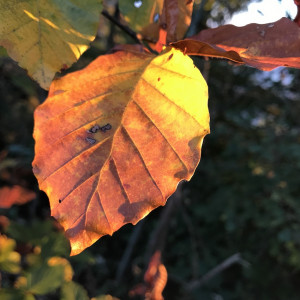
Autumn is the time of year that reminds me that each one of us is like a leaf, both ordinary and extraordinary. Our lives are fleeting and, like leaves, even when we can no longer contribute as we did before we can still contribute long into winter and beyond but in a totally different way.
What can we do when we no longer feel useful?
The other day a 90 year old friend shared with me how useless she felt about her current physical state. She wondered why she was here taking up oxygen that others could use.
I think that no matter how old we get or disabled, as long as we are still breathing there’s a lot we can do, that we don’t realize matters, to help Read the rest of this entry »
Topics: Depression Cures, spirit, suicide | No Comments »
Do you feel like you don’t fit in?
By Jena Griffiths | November 2, 2017
Our lives are driven by the questions we ask ourselves. Are you asking the right questions?

There’s something compelling about running with the herd, moving as one at recklessly high speeds. Horses tune into this state. It is like they can’t stop themselves. Cyclists feel it too. Wheels whirring. A sense of peace that comes only with total presence due to extremely high risk. It’s a flow state. Reacting like fish in shoal. Becoming One Mind.
Whenever I see a bike race on TV or anywhere it brings tears to my eyes. The sound of the wheels brings back memories of that cherished state. And then I know how horses feel when a cycling peloton whizzes past their paddock. They feel that irresistible pull. They will do anything to jump whatever barrier is between them and the pack that’s moving as one mind. If it isn’t possible to join the pack they’ll run along with it while still inside their paddock, as far as their confinement allows. Can’t they see they are horses not bicycles? What is this intense urge to run with the herd?
Once, in my cycling days, we had a high-jumping horse try to join our bike race. All hell broke loose. There were cyclists down, the pack split and eventually external help was needed to remove the horse from the race. When a horse tries to merge with a pack of cyclists it is just not going to work, no matter how well behaved the horse or how tolerant the cyclists. Someone is going to get hurt.
A friend of mine has a teenager daughter who urgently wants to run with the herd. She ’s very bright, talented and a free thinker and as a result she’s rather unpredictable. She just doesn’t fit in with the local gang and they won’t let her.
Why not? She doesn’t behave the way the others behave. Like the cyclists not wanting the horse to join their pack, it is not that there is anything wrong with her it is just that she’s in a different league. They don’t feel safe because there is no possibility of anticipating what she’ll do next.
So how does that help my friend’s daughter? Right now all she feels is total rejection.
One healing story to remind her about is Read the rest of this entry »
Topics: Dealing with the inner critic | No Comments »
Interview with Markus Hirzig: Risking change – is it safe?
By Jena Griffiths | September 29, 2017
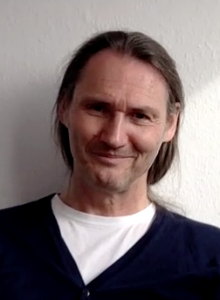 We will be discussing this topic with Markus Hirzig today on our sister site Earthuni. Join us live and ask questions.
We will be discussing this topic with Markus Hirzig today on our sister site Earthuni. Join us live and ask questions.
– Topic – the game of curiosity and safety
In this call Markus will talk about safety and security as the base of our development. We will discuss the tension between curiosity and safety/belonging. What does belonging have to do with safety and why is this important for you to know right now.
Then Markus will share thoughts about the possibility of taking time to feel into change and look deeper.
How do we dare to move on, and risk change, even if the world doesn’t agree or support us?
Replay?Access here.
Topics: Being in transition, Can't say no, Don't know what you want, Responsibility vs irresponsibility | No Comments »

